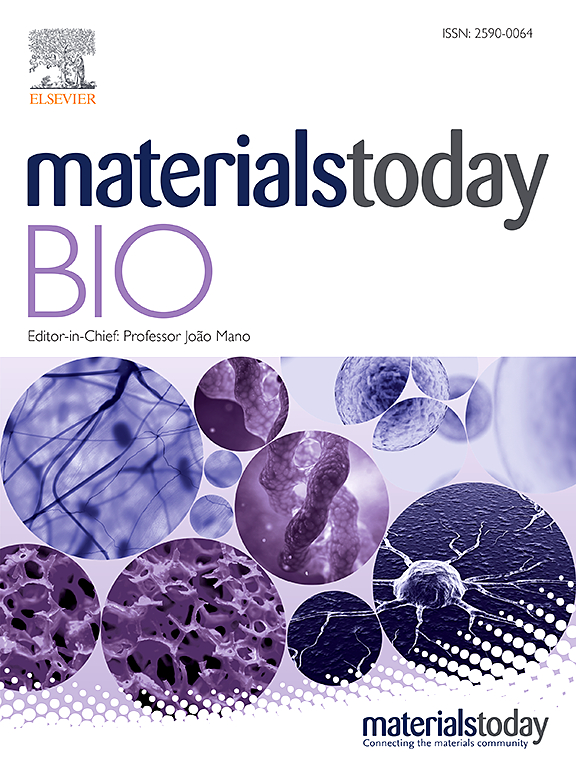3D bioprinted biomimetic MOF-functionalized hydrogel scaffolds for bone regeneration: Synergistic osteogenesis and osteoimmunomodulation
IF 8.7
1区 医学
Q1 ENGINEERING, BIOMEDICAL
引用次数: 0
Abstract
Critical-size bone defects remain a significant clinical challenge. The lack of endogenous stem cells with osteogenic differentiation potential in the defect area, combined with the inflammatory responses induced by scaffold implantation, highlights the need for biomaterials that can deliver stem cells and possess inflammatory regulation properties. In this study, we developed a 3D bioprinted gelatin methacrylate (GelMA) hydrogel scaffold modified with luteolin-loaded ZIF-8 (LUT@ZIF-8) nanoparticles, designed to deliver bone marrow mesenchymal stem cells (BMSCs) to the defect site and release bioactive components that promote osteogenesis and modulate the immune microenvironment. The LUT@ZIF-8/GelMA hydrogel scaffolds demonstrated excellent physical properties and biocompatibility. The sustained release of luteolin and zinc ions from the LUT@ZIF-8 nanoparticles conferred antibacterial, osteoinductive, and inflammatory regulation effects. The immune microenvironment modulated by LUT@ZIF-8/GelMA hydrogel scaffolds facilitated osteogenic differentiation of BMSCs. Furthermore, in vivo experiments confirmed the osteogenic and inflammatory regulation capabilities of the LUT@ZIF-8/GelMA hydrogel scaffolds. In conclusion, the 3D bioprinted LUT@ZIF-8/GelMA hydrogel scaffolds exhibit osteoimmunomodulatory properties, presenting a promising strategy for the treatment of bone defects.

求助全文
约1分钟内获得全文
求助全文
来源期刊

Materials Today Bio
Multiple-
CiteScore
8.30
自引率
4.90%
发文量
303
审稿时长
30 days
期刊介绍:
Materials Today Bio is a multidisciplinary journal that specializes in the intersection between biology and materials science, chemistry, physics, engineering, and medicine. It covers various aspects such as the design and assembly of new structures, their interaction with biological systems, functionalization, bioimaging, therapies, and diagnostics in healthcare. The journal aims to showcase the most significant advancements and discoveries in this field. As part of the Materials Today family, Materials Today Bio provides rigorous peer review, quick decision-making, and high visibility for authors. It is indexed in Scopus, PubMed Central, Emerging Sources, Citation Index (ESCI), and Directory of Open Access Journals (DOAJ).
 求助内容:
求助内容: 应助结果提醒方式:
应助结果提醒方式:


